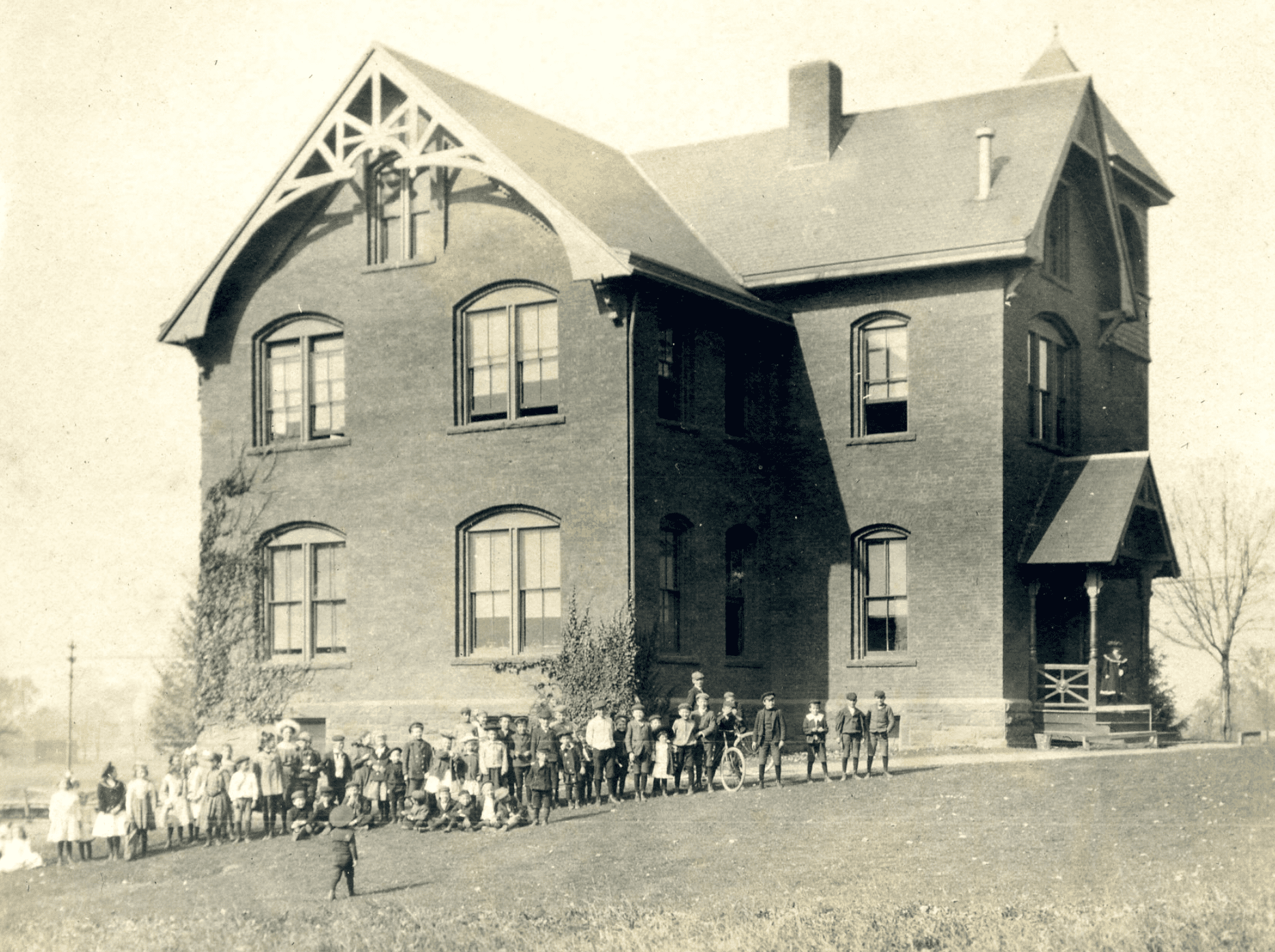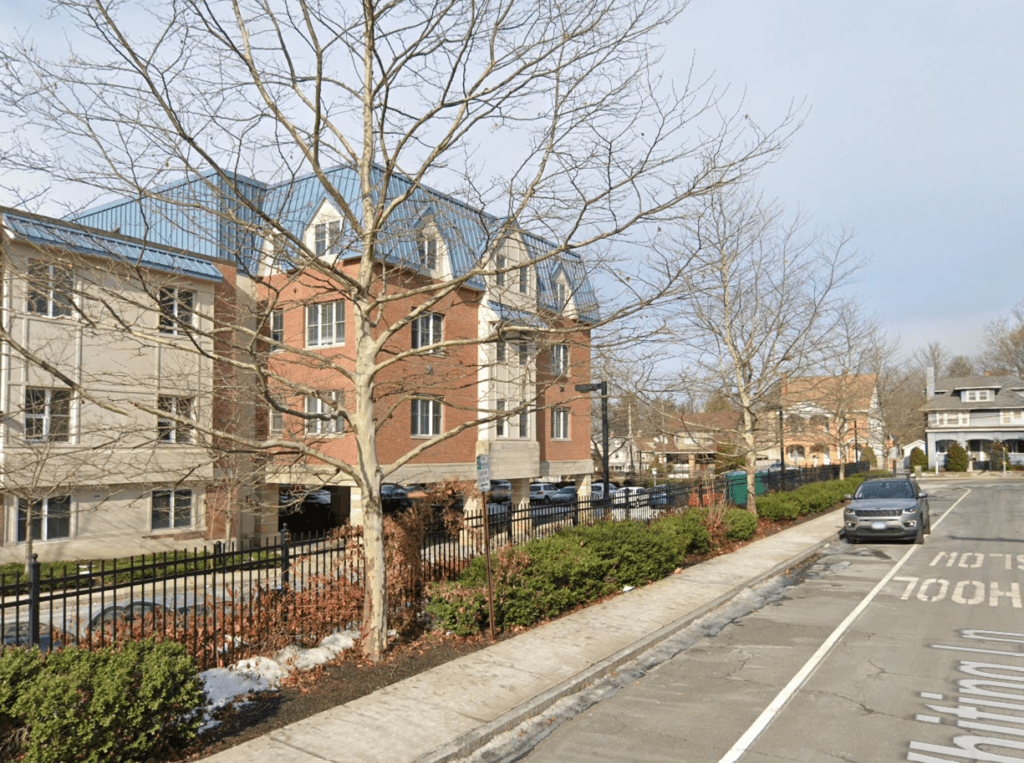From the West Hartford Archives: East School, Farmington Avenue and Whiting Lane

Audio By Carbonatix

East School. Photo courtesy of Noah Webster House & West Hartford Historical Society
Historian Jeff Murray takes a look into West Hartford’s past to uncover some surprising information, stir up some memories, or reflect on how much life has changed – or hasn’t changed at all. Enjoy this week’s ‘From West Hartford’s Archives’ …
By Jeff Murray
This is a photo of the East School, which was located on the southwest corner of Farmington Avenue and Whiting Lane, just north of what was Plant Junior High School and the current Whiting Lane School.
The East School was built around 1888 to serve the needs of the town’s growing population in the east side, mostly on Fern Street, Farmington Avenue, Highland Street, Concord Street, and Prospect Avenue. The school was originally two rooms and later added onto.
From the late 1880s to 1894, the area was developed very quickly – Whiting Lane and Arnoldale Road were laid out and houses were built along Highland and Concord. The residents of this neighborhood, who were often Hartford insurance executives or other corporate leaders lured by the idea of a country house outside the city, were much wealthier compared to the residents in the Center and the farmers and working-class residents in the rest of the town. Therefore, there was a much quicker expectation that accommodations for sewage, water, and of course education would be plenty.
One of the East Siders, John C. Webster, vice president of Aetna Insurance Company, who lived on Concord, began arguing in 1895 that the only school they were using – the East School – was not sustainable for the growing population and was not receiving the maintenance it needed. He was also angry that the annual town meeting that year heartily discussed a brand new high school for the Center and (in his view) ignored his very real concerns.
This developed into a general feeling among some residents in that section that they would be better off annexed to Hartford. A push was made to break off from West Hartford and join Hartford, but the petition failed to garner the mass support needed against the rest of West Hartford and the plan was defeated.
While annexation was rejected and the residents who supported it had to return to town life with their tail between their legs, there was a noticeable increase in improvements that touched on the very concerns they had highlighted. Sewage disposal was made better and water supply was finally made sufficient. The East School also saw improvements: heating, expanded areas for more students, and later a fire escape.
The town explained that they were planning on making the changes anyway, but an argument can be made that the movement for annexation may have been necessary to apply pressure to the town over issues that weren’t addressed as quickly as they should have been.
With the advent of the trolley through Farmington Avenue and new houses by 1900, the population continued to grow and by World War I, the school was badly crowded again. This growth coincided with the huge expansion in real estate development in the whole neighborhood: in a 10 year period from 1909 to 1919, every direction from the East School had new streets and houses: the east (Arnoldale, Beverly, Lexington); the north (West Hill, Vanderbilt, Lilley, and Walkley); the west (Maplewood Ave); and the new housing along Boulevard to the south.
In 1919, the town held meetings to discuss the space problems at the school and settled on a junior high school in 1920. Plant Junior High School went forward soon after. The south end of the East School, seen in the foreground in this photograph facing the camera, was connected to the north side of Plant by an arcade. After the East School was decommissioned as a school building, it was turned into administrative offices for West Hartford Public Schools in October 1954. The first floor included the offices of the superintendent, assistant superintendent, curriculum coordinator, music director, business offices, and Board of Education room. The second floor contained the Department of Pupil Services, reading and speech therapists, elementary education director, and cafeterias director. As new construction and renovations in the late 1960s and 1970s allowed sections of the school department administrators to move out, the use of the space dwindled steadily.
Poetically, one of the last times the school had a presence was in February 1974 when West Hartford teachers marched on the building to protest the lack of a contract for more than seven months. By December, the rest of the offices were moved to Steele Road, and the East School building was finally demolished to make way for a parking lot at the corner. In 2012, the Alfred E. Plant housing complex was built on this corner. It still stands today.
The East School building stood for 86 years during the most significant years of the town’s population expansion. It was built only a few decades after West Hartford broke free from Hartford in 1854, anchored the suburban development of the East Side through two world wars, and served many people who are still alive today and can remember the building well, both as a school and as the offices. 2024 will be 50 years since it was torn down and it has been either forgotten by many or never known at all, but local history helps revive the things that kept us going.

Looking north towards Farmington Avenue from Whiting Lane. Google Street View
Jeff Murray was born and raised in West Hartford and has been involved with the Noah Webster House & West Hartford Historical Society since 2011 when he was a high school student and won the Meyer Prize for his essay on local history. Jeff routinely volunteers as local history researcher uncovering information for numerous museum programs such as the West Hartford House Tour and West Hartford Hauntings. Jeff works as a data analyst at Pratt & Whitney.
Like what you see here? Click here to subscribe to We-Ha’s newsletter so you’ll always be in the know about what’s happening in West Hartford! Click the blue button below to become a supporter of We-Ha.com and our efforts to continue producing quality journalism.




These weekly historical posts are amazing, Jeff! I love this kind of thing and have been looking forward to your new stories each week. Case in point, this was my old neighborhood and I had no clue about this building, or the area’s growth in the early 1900s. It explains the nice houses I loved looking at on Arnoldale and Whiting. I’m so happy We-ha.com is doing this segment… keep up the good work!
Yes, East School! I remember Miss Braheney, Miss Crockett, Mrs Dunn. Ran home for lunch, cutting through yards on Whiting Lane, Arnoldale, Beverly to Lexington.
Then the move to brand new Whiting Lane School with principal Arthur Boswell, Mr. Kleinman and Mr. Christie for 4th and 5th. And a cafeteria! Good times!
I have wonderful memories of Whiting Lane, and yes, Mr Boswell (leaning against the wall during lunch in the cafeteria). I’m trying to remember the name of the young woman who was the music teacher/choir director in the late 60s. Anyone??
I was in East School from 1948-1949. My mother did not want her kids going there because it was old and she thought it a fire trap. We lived on Farnham Road, about half way between Morley and East, but officially in the East School district. Mom got permission for her 2 kids to go to Morley instead of East, but the following year that permission was rescinded. It was just after WWII and men were coming home from military service and starting families. The youth population of West Hartford was growing and the school system was redistricting.
My brother had Mrs. Buchanan for 2nd grade at East. I was in 3rd grade with Mrs. Gilberto in a class that had both 3rd and 4th graders in it. There were six boys named Robert. I sat next to Robert Radin who grew up and became a professor of physics at the University of Hartford. I remember Mrs. Gilberto reading Bible stories to us, going down the metal fire escape, the huge slide on the playground, the all-metal maypole.